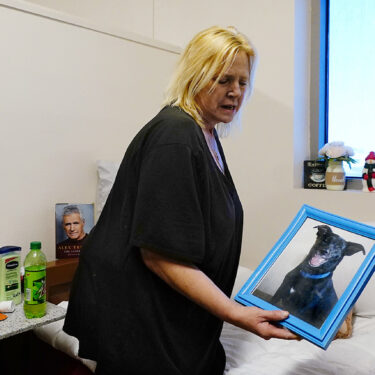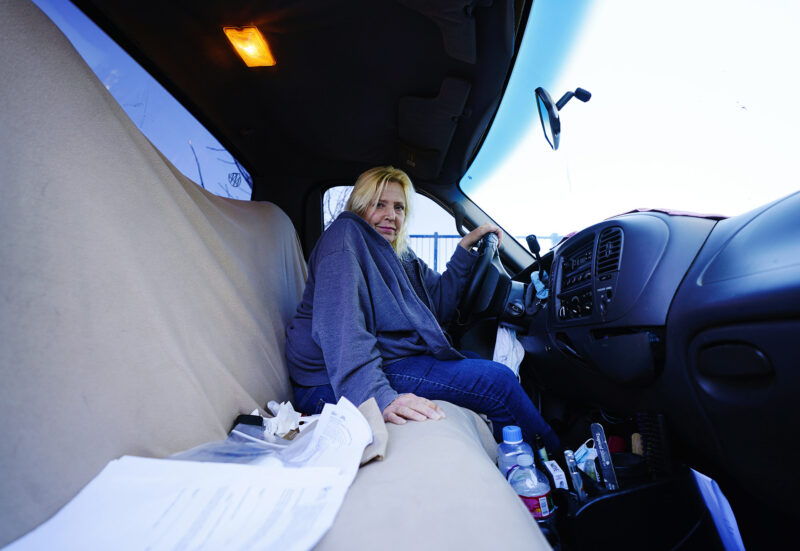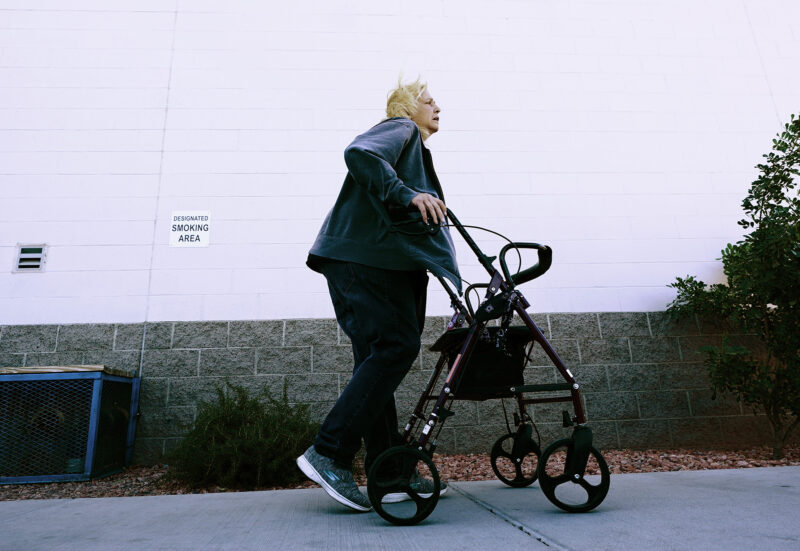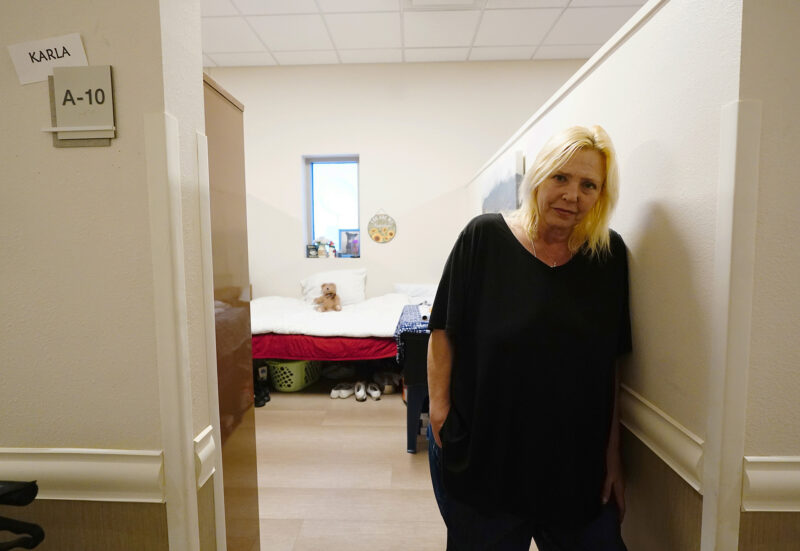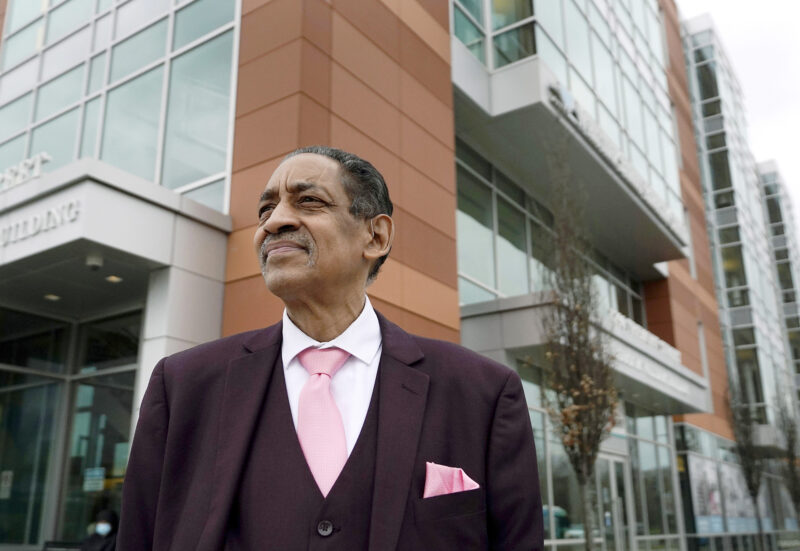Phoenix reporter Anita Snow told the story a woman living on the street in Arizona because she could not afford the rising rents; that reporting led to coverage of a disturbing nationwide trend: a surge in elderly homeless.
Snow reported on Karla Finocchio, whose slide into homelessness began when she split with her partner of 18 years and temporarily moved in with a cousin. The 55-year-old planned to use her $800-a-month disability check to get an apartment after back surgery. But she soon was sleeping in her old pickup protected by her German Shepherd mix Scrappy, unable to afford housing in Phoenix, where median monthly rents soared 33% during the coronavirus pandemic — to more than $1,220 for a one-bedroom.
Digging deeper, Snow learned that Finocchio is just one face of America’s graying homeless population, a rapidly expanding group of destitute and desperate people 50 and older suddenly without a permanent home after a job loss, divorce, family death or health crisis during the pandemic.
Working with colleagues around the country, Snow tracked down stories and images of people who worked their whole lives but couldn’t afford a home after retirement.
According to her reporting, the U.S. population of people 65 and older experiencing homelessness will nearly triple from 40,000 to 106,000 by 2030. Navigating sidewalks in wheelchairs and walkers, the aging homeless have medical ages greater than their years, with mobility, cognitive and chronic problems like diabetes. Many contracted COVID-19 or couldn’t work because of pandemic restrictions.
America’s graying homeless population is rapidly expanding. It’s a group of people 50 and older who have suddenly found themselves without a permanent home following a job loss,divorce, family death or health crisis during the global pandemic. https://t.co/FGZ5E1Zmyz
— The Associated Press (@AP) April 10, 2022
Other AP journalists contributing to the piece included photographers Ross D. Franklin in Phoenix,Greg Bull in San Diego and Steven Senne in Boston, and reporters Chris Weber in Los Angeles and Janie Har in San Francisco.
Snow’s story,promoted for Monday editions,landed on front pages online and in print,including The Denver Post,and attracted readership at apnews.com.
For recognizing a heartbreaking national trend and developing a story that resonated with AP customers and readers, Snow earns AP’s Best of the Week — Second Winner.

